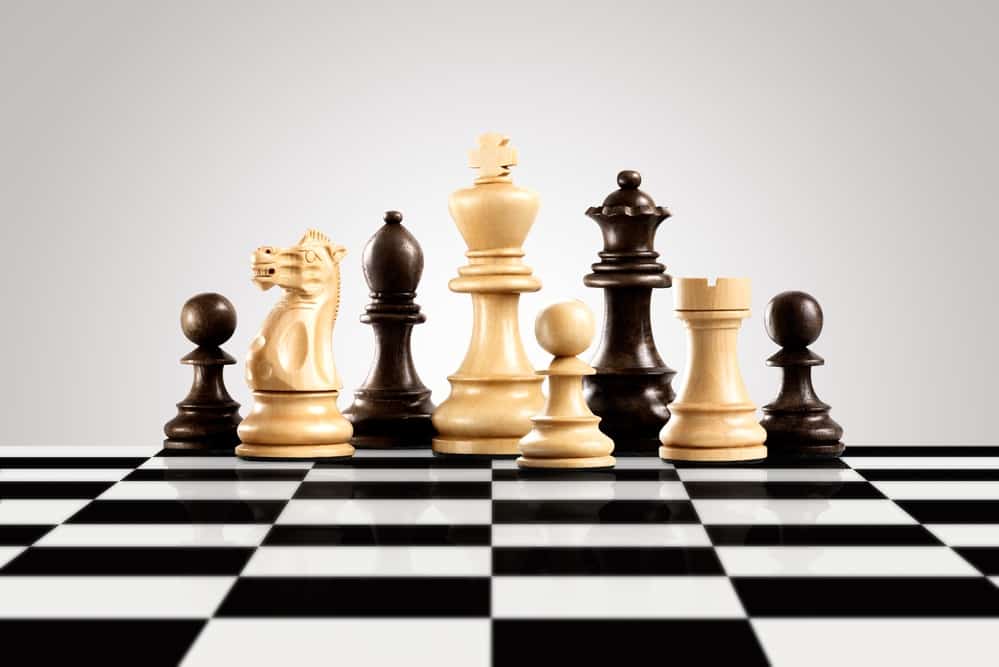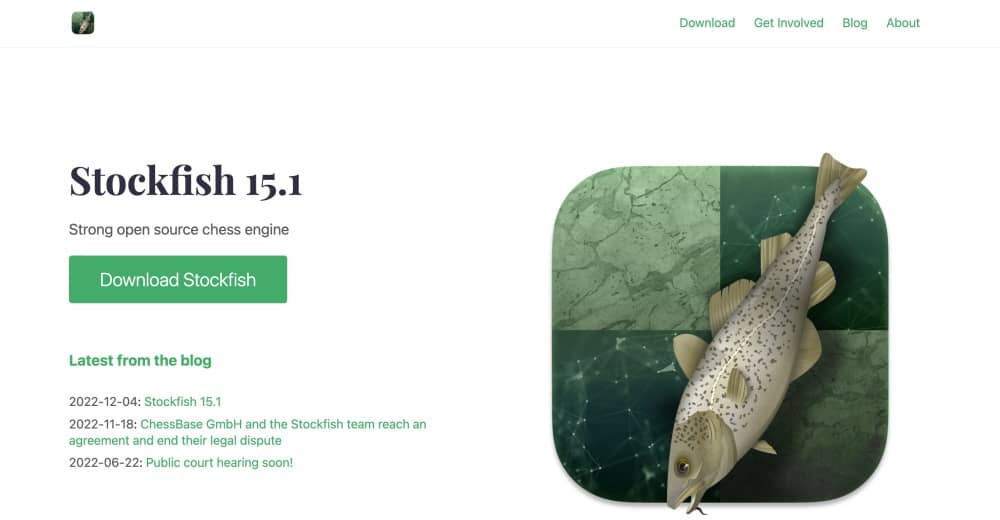
ChatGPT and Stockfish are two of the most fascinating chess-related technologies of our time. ChatGPT is a powerful language model developed by OpenAI, capable of generating human-like responses to a wide range of prompts, while Stockfish is a renowned chess engine that has dominated computer chess competitions for over a decade.
While these technologies may seem vastly different at first glance, they both represent exciting advances in the field of chess and offer unique insights and possibilities for players and enthusiasts alike.
ChatGPT vs Stockfish – Overview
What is ChatGPT?
ChatGPT is a large language model developed by OpenAI, based on the GPT (Generative Pre-trained Transformer) architecture. It has been trained on a massive amount of text data from various sources, including books, websites, and social media platforms.
ChatGPT is capable of generating human-like responses to text prompts and has been used in a variety of applications, including chatbots, language translation, and text completion.
ChatGPT is designed to understand natural language and generate text that is coherent, relevant, and grammatically correct.
It can be fine-tuned for specific tasks, such as answering questions or generating creative writing. ChatGPT has demonstrated impressive capabilities in natural language processing, and its use is growing in areas such as customer service, content generation, and language translation.

What is Stockfish?
Stockfish is an open-source chess engine that uses artificial intelligence and machine learning techniques to play chess.
It is one of the strongest chess engines in the world and has won numerous computer chess championships. Stockfish analyzes chess positions using algorithms and heuristics to determine the best moves and can evaluate millions of possible moves in a matter of seconds.
Stockfish is based on the alpha-beta search algorithm, which allows it to evaluate moves and positions quickly and accurately.
It also uses a complex evaluation function that takes into account various factors, such as piece values, pawn structure, king safety, and material imbalances. Stockfish can be run on a variety of platforms, including personal computers and smartphones, and is used by both amateur and professional chess players.
Overall, Stockfish is a powerful chess engine that can analyze positions and suggest moves with incredible speed and accuracy.
Its use is growing in the world of competitive chess, and it has become an essential tool for both players and coaches.

Stockfish vs ChatGPT – Comparison Table
Here is a comparison table of ChatGPT and Stockfish:
| Criteria | ChatGPT | Stockfish |
|---|---|---|
| Purpose: | Natural language processing | Chess analysis and gameplay |
| Functionality: | Generates text-based outputs | Generates chess moves and analysis |
| Learning approach: | Machine learning model trained on vast amounts of text data | Uses algorithms and heuristics based on the rules of chess |
| User base: | Broad range of users including businesses, content creators, and language learners | Primarily used by chess players, coaches, and enthusiasts |
| Application: | Chatbots, language translation, creative writing | Chess analysis, training, engine vs. engine matches |
| Output: | Text-based responses | Chess moves and analysis |
| Algorithm: | Deep learning techniques | Chess-specific heuristics |
| Input data: | Text prompts | Chess positions |
How are ChatGPT and Stockfish used?
How is ChatGPT used?
ChatGPT is used in a variety of applications that involve natural language processing.
Some of the common uses of ChatGPT include:
- Chatbots: ChatGPT is used to develop chatbots that can interact with users in a human-like manner. Chatbots can be used for customer service, technical support, and sales inquiries.
- Language translation: ChatGPT can be fine-tuned for language translation tasks. It has been used to develop translation systems for a variety of languages, including English, Chinese, and Spanish.
- Text completion: ChatGPT can be used to generate text that completes a given sentence or paragraph. This has applications in content creation, where writers can use ChatGPT to generate ideas or complete sections of a document.
- Creative writing: ChatGPT can be used to generate creative writing, such as poetry or short stories. It has been used by writers and artists to generate new ideas and explore different writing styles.
Examples of ChatGPT being used include OpenAI’s GPT-3, which has been used by various companies to develop chatbots and language translation systems. Another example is the AI writing assistant, Grammarly, which uses a variant of GPT-2 to provide writing suggestions and improve grammar.
How is Stockfish used?
Stockfish is primarily used as a tool for chess analysis and training.
Some of the common uses of Stockfish include:
- Game analysis: Stockfish can be used to analyze chess games and provide suggestions for better moves. This has applications in both competitive and casual chess play, as players can use Stockfish to review their games and identify areas for improvement.
- Chess training: Stockfish can be used as a training tool for chess players, as it can provide insights into chess positions and strategies. Coaches can use Stockfish to develop training programs for their students, and players can use it to analyze their games and improve their skills.
- Engine vs. engine matches: Stockfish can be used to run engine vs. engine matches, where two chess engines play against each other. These matches can be used to evaluate the strength of different engines and to benchmark improvements in engine performance.
- Chess engine tournaments: Stockfish can be used in computer chess tournaments, where multiple engines compete against each other. These tournaments have become increasingly popular in recent years, and have led to the development of stronger and more sophisticated chess engines.
Examples of Stockfish being used include its integration into various chess software programs, such as ChessBase and lichess.org. It is also used in online chess servers, such as Chess.com, where players can analyze their games and receive recommendations from Stockfish.
What are the Differences Between ChatGPT and Stockfish?
ChatGPT and Stockfish are very different types of software that are used for different purposes.
Some of the main differences between ChatGPT and Stockfish include:
Purpose:
ChatGPT is primarily designed for natural language processing, which means it is used for tasks like generating text, answering questions, and understanding human language. On the other hand, Stockfish is designed for analyzing and playing chess games, which involves evaluating chess positions and suggesting moves.
For example, if a business wants to develop a chatbot to handle customer inquiries, it would use ChatGPT to generate human-like responses to customer messages. On the other hand, a chess coach may use Stockfish to analyze a student’s game and suggest better moves.
Functionality:
ChatGPT is designed to generate natural-sounding responses to text prompts, while Stockfish is designed to analyze chess positions and suggest moves based on specific heuristics and algorithms.
For example, if a user inputs a question like “What is the capital of France?”, ChatGPT would generate a response like “The capital of France is Paris.” On the other hand, if a chess position is an input into Stockfish, it would generate a list of suggested moves based on its evaluation of the position.
Learning approach:
ChatGPT is a machine learning model that has been trained on vast amounts of text data, which allows it to generate human-like responses to text prompts. Stockfish, on the other hand, uses algorithms and heuristics to analyze chess positions and suggest moves.
For example, ChatGPT has been trained on millions of text inputs from the internet, which allows it to generate natural-sounding responses to new prompts. Stockfish, on the other hand, uses algorithms and heuristics based on the rules of chess to analyze positions and suggest moves.
Output:
ChatGPT generates text-based outputs, while Stockfish generates chess moves and analysis.
For example, if a user inputs a question into ChatGPT, it will generate a text-based response. On the other hand, if a user inputs a chess position into Stockfish, it will generate a list of suggested moves and an analysis of the position.
Application:
ChatGPT is used for a variety of applications, including chatbots, language translation, and creative writing, while Stockfish is primarily used for analyzing chess games, training, and engine vs. engine matches.
For example, ChatGPT can be used to generate text for social media posts, articles, and other types of content. On the other hand, Stockfish is used to analyze chess games, train chess players, and compete against other chess engines in tournaments.
User base:
ChatGPT has a broad range of users, including businesses, content creators, and language learners. Stockfish, on the other hand, is primarily used by chess players, coaches, and enthusiasts.
For example, a business may use ChatGPT to develop a chatbot to handle customer inquiries, while a chess coach may use Stockfish to analyze a student’s game and suggest better moves.
What are the Similarities Between ChatGPT and Stockfish?
Although ChatGPT and Stockfish are very different types of software designed for different purposes, there are a few similarities between them:
- Both are computer programs: ChatGPT and Stockfish are both computer programs that are designed to run on digital devices like computers and smartphones.
- Both use algorithms: Both ChatGPT and Stockfish use algorithms to process data and make predictions. ChatGPT uses algorithms based on deep learning techniques, while Stockfish uses algorithms based on chess-specific heuristics.
- Both are designed to make predictions: ChatGPT and Stockfish are both designed to make predictions based on input data. ChatGPT predicts what text responses are likely to follow a given prompt, while Stockfish predicts what chess moves are best in a given position.
- Both have been trained on large datasets: ChatGPT and Stockfish have both been trained on large datasets to improve their accuracy and predictive abilities. ChatGPT has been trained on massive amounts of text data from the internet, while Stockfish has been trained on millions of chess games.
- Both have user interfaces: ChatGPT and Stockfish both have user interfaces that allow users to interact with the software. ChatGPT can be accessed through chatbots or text editors, while Stockfish can be accessed through chess game software or online chess platforms.
While there are some similarities between ChatGPT and Stockfish, it’s important to note that they are fundamentally different types of software designed for different purposes.
Can you use ChatGPT for chess?
ChatGPT is a natural language processing (NLP) model and is not designed specifically for chess. In fact, it can’t entirely replace a solution like Stockfish.
While it is possible to use ChatGPT to generate text-based responses related to chess, such as providing information about the rules of chess, the model does not have a deep understanding of the game or the ability to generate chess moves.
On the other hand, Stockfish is a chess engine designed specifically for analyzing and playing chess.
It has been trained in millions of chess games and uses algorithms and heuristics based on the rules of chess to generate the best moves for a given position. If you are looking for software to play or analyze chess, Stockfish would be a better choice than ChatGPT.
5 Ways Chess Players Could Use ChatGPT for Chess
While ChatGPT is not specifically designed for chess, there are still a few ways that chess players could potentially use the model for the game:
Learning chess terminology:
ChatGPT can generate text-based responses that explain chess terminology, which can be helpful for new players who are just starting to learn the game. ChatGPT can provide concise and easy-to-understand definitions for terms such as “en passant,” “castling,” or “zugzwang.” This can save time for new players who might otherwise have to sift through multiple resources to understand a single concept.
Generating chess-related content: Chess players who write about the game, whether it is for a blog, social media, or other platforms, could use ChatGPT to generate ideas for content related to chess.
By providing the model with a prompt such as “Chess-related topics,” ChatGPT could generate a list of ideas for articles or videos. This could help content creators consistently produce fresh and engaging content for their audience.
Language translation:
Chess is an international game, and players from around the world often use different languages to communicate about the game.
ChatGPT could be used to help translate chess-related conversations between players who speak different languages.
Players could input text in their native language and ChatGPT could generate a translation that is understandable to their opponents. This could be especially helpful for online chess games or chats where language barriers may be an issue.
Generating chess-related prompts:
ChatGPT could be used to generate chess-related prompts for writing exercises or other creative activities.
For example, a prompt such as “Write a short story that involves a chess game” could be generated by the model. This could be useful for teachers or coaches who want to incorporate chess into their writing or language arts curriculum, or for writers who want to incorporate chess into their fictional stories.
Chess-related chatbots:
Chatbots are becoming increasingly popular for a wide range of applications, and it’s possible that a chess-related chatbot could be created using ChatGPT.
Such a chatbot could potentially answer basic questions about the game or provide chess-related advice to players.
For example, a player could ask the chatbot “What is the best opening for white?” and ChatGPT could generate a response based on its knowledge of chess openings. This could be particularly helpful for beginners who want to improve their understanding of the game.
What’s the Difference between the best chess player vs AI?
The main difference between the best chess player and an AI chess engine is the way they approach the game and make decisions.
A human chess player relies on their own knowledge, experience, and intuition to evaluate a given position and decide on the best move. They may use a combination of strategic planning, pattern recognition, and calculation to come up with their decision.
Human players also tend to consider factors beyond the board, such as the psychological state of their opponent or the time remaining on the clock.
On the other hand, an AI chess engine like Stockfish or AlphaZero uses algorithms and heuristics to evaluate a position and calculate the best move. They are not influenced by emotions, distractions, or biases, and can analyze many more possible moves and variations than a human player could ever do.
They can also play at an incredibly high level of accuracy, making very few mistakes.
Another key difference is that AI chess engines can continue to improve with further training and optimization, whereas the performance of human players is limited by their individual abilities and the amount of time they can devote to practicing and studying the game.
In summary, while human chess players have the advantage of intuition, creativity, and psychological insight, AI chess engines have superior calculation, analysis, and accuracy. Ultimately, the best chess player may still have an edge over AI in some circumstances, such as when playing against a weaker or unfamiliar opponent, but in general, AI is now considered to be the strongest player in the world.
My Final Thoughts
In conclusion, ChatGPT and Stockfish are both powerful tools that can greatly enhance a player’s understanding and enjoyment of chess. ChatGPT offers a unique way to explore chess-related concepts and strategies and can provide valuable insights and inspiration for players of all levels. On the other hand, Stockfish is an unbeatable opponent that can challenge even the most skilled human players and can help users analyze and improve their own games.
Ultimately, which one to use depends on the individual’s goals and preferences.
If you’re looking to study and improve your own game, Stockfish is an invaluable resource that can provide deep analysis and feedback on your play.
If you’re more interested in exploring creative new ideas and perspectives on chess, ChatGPT may be the ideal tool for you. And of course, there’s nothing stopping you from using both to get the best of both worlds!
In any scenario, both ChatGPT and Stockfish offer unique and exciting ways to explore and engage with the endlessly fascinating world of chess.
Whether you’re a seasoned grandmaster or a curious newcomer, these technologies are sure to provide hours of enjoyment and enlightenment. So why not give them a try and see what they can do for you?